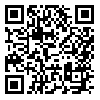BibTeX | RIS | EndNote | Medlars | ProCite | Reference Manager | RefWorks
Send citation to:
URL: http://tumj.tums.ac.ir/article-1-1464-en.html
Cleft palate is a congenital condition that occurs with the incidence rate of one out of 2000 births. This anomaly produces intraoral pressure changes (increase or decrease), can cause speech, sucking and feeding problems of involved patient. On the other hand, if cleft palate is associated with cleft of the lip or alveolar area, growth and alignment of teeth may change the appearance of the patient and affect the psychologic and occupational future of the patient. Eustatian tube malfunction in involved neonates increase. Many procedures are used to repair the cleft palate and correction of palatal muscles which are: 1) Von Langenbeck (18.5%). 2) Veau-Wardil-Kilner (72.5%). 3) Double opposing Z-Plasty (9%). In this research the demographic criteria of patients including age of the patient at operation rime (mean age 30.14 months), city of residence, family history of cleft palate (12.4%), familial relation of parents (15.2%), associated anomalies, complete or incomplete lesion, weight of patients at the time of surgery (mean 11.28 Kg), hemoglobin (11.3 mg/dl), complications, otitis media and the side of cleft palate are studied in 178 admitted patients to Imam General Hospital between 1989 and 1995.
| Rights and permissions | |
 |
This work is licensed under a Creative Commons Attribution-NonCommercial 4.0 International License. |





